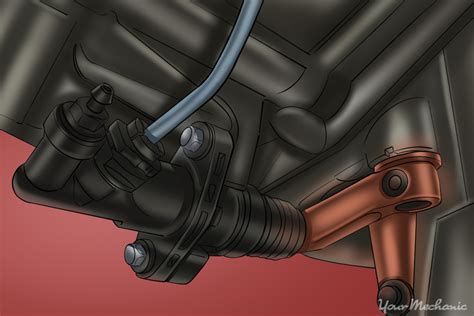Improve Your Clutch Performance: Install a New Slave Cylinder
Is your clutch feeling spongy, requiring excessive pedal travel, or even failing to engage properly? These are all common symptoms of a failing clutch slave cylinder. Replacing this relatively inexpensive part can dramatically improve your vehicle's clutch performance, saving you time, money, and frustration in the long run. This guide will walk you through the process of installing a new slave cylinder, helping you regain control and confidence behind the wheel.
What is a Clutch Slave Cylinder?
Before diving into the installation, let's understand the role of the slave cylinder. This hydraulic component is crucial in the clutch system. When you depress the clutch pedal, the master cylinder sends hydraulic pressure through the lines to the slave cylinder. The slave cylinder then pushes on the clutch fork, disengaging the clutch, allowing you to shift gears. A failing slave cylinder compromises this process, leading to the problems mentioned above.
How do I know if my slave cylinder needs replacing?
Several signs indicate a failing slave cylinder:
- Spongy or soft clutch pedal: This signifies a leak in the hydraulic system.
- Excessive pedal travel: You need to push the pedal much further than usual to disengage the clutch.
- Clutch slippage: The engine revs without a corresponding increase in vehicle speed.
- Inability to engage the clutch: The clutch fails to disengage, preventing gear changes.
- Fluid leaks around the slave cylinder: Visible evidence of hydraulic fluid leakage.
Installing a New Clutch Slave Cylinder: A Step-by-Step Guide
Disclaimer: This guide provides general steps. Specific procedures vary greatly depending on the make, model, and year of your vehicle. Always consult your vehicle's repair manual for detailed, model-specific instructions. Working on your vehicle's clutch system requires mechanical aptitude. If unsure, consult a qualified mechanic.
Tools and Materials You'll Need:
- New clutch slave cylinder: Ensure you purchase the correct part for your vehicle.
- Vehicle repair manual: Crucial for model-specific instructions.
- Wrench set: Metric and/or SAE, depending on your vehicle.
- Socket set: Again, metric or SAE as needed.
- Torque wrench: To tighten bolts to the manufacturer's specifications.
- Jack and jack stands: For safe vehicle elevation.
- Drain pan: To catch any spilled transmission fluid.
- Gloves: To protect your hands.
- Clean rags: For cleaning up spills.
- Brake cleaner: To clean the area around the slave cylinder.
Step-by-Step Installation:
-
Safety First: Securely jack up your vehicle and place it on jack stands. Always consult your vehicle's owner's manual for jacking points.
-
Locate the Slave Cylinder: Identify the slave cylinder's location. It's usually found near the transmission bell housing.
-
Drain Transmission Fluid (if necessary): Some procedures require draining transmission fluid. Refer to your repair manual for specific instructions.
-
Disconnect the Hydraulic Line: Carefully disconnect the hydraulic line from the old slave cylinder. Be prepared for some fluid spillage.
-
Remove the Old Slave Cylinder: Remove the bolts securing the old slave cylinder to the transmission. This step often requires patience and the right tools.
-
Clean the Mounting Area: Thoroughly clean the mounting area of any debris or old gasket material.
-
Install the New Slave Cylinder: Carefully install the new slave cylinder, ensuring it is properly aligned.
-
Reconnect the Hydraulic Line: Attach the hydraulic line to the new slave cylinder.
-
Bleed the Clutch System: This is crucial to remove any air bubbles in the hydraulic system. Refer to your vehicle's repair manual for the correct bleeding procedure.
-
Lower the Vehicle: Carefully lower your vehicle from the jack stands.
-
Test the Clutch: Test the clutch functionality, ensuring smooth engagement and disengagement.
Troubleshooting Common Issues
Clutch Still Feels Spongy After Replacement:
This could indicate air trapped in the hydraulic system. Re-bleed the clutch system carefully. A faulty master cylinder is also a possibility.
Clutch Pedal Feels Hard or Doesn't Engage:
Check for proper alignment of the slave cylinder and ensure the hydraulic line is correctly connected and free of kinks.
Clutch Leaks After Installation:
This suggests a faulty seal on the new slave cylinder or a damaged hydraulic line. Inspect for leaks and replace any faulty components.
Replacing a clutch slave cylinder can significantly improve your vehicle's drivability. By following these steps and consulting your vehicle's repair manual, you can successfully complete this task. Remember, safety should always be your top priority. If you are not comfortable performing this repair yourself, it's best to seek professional assistance from a qualified mechanic.

